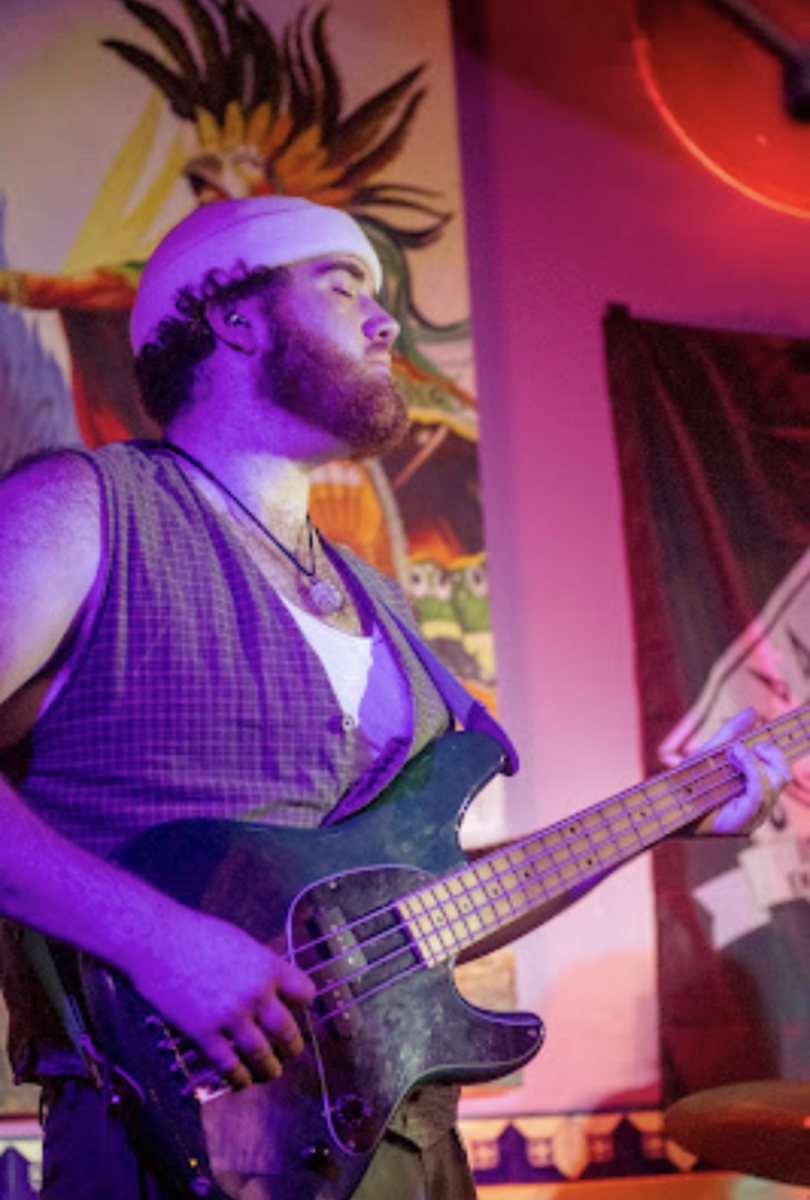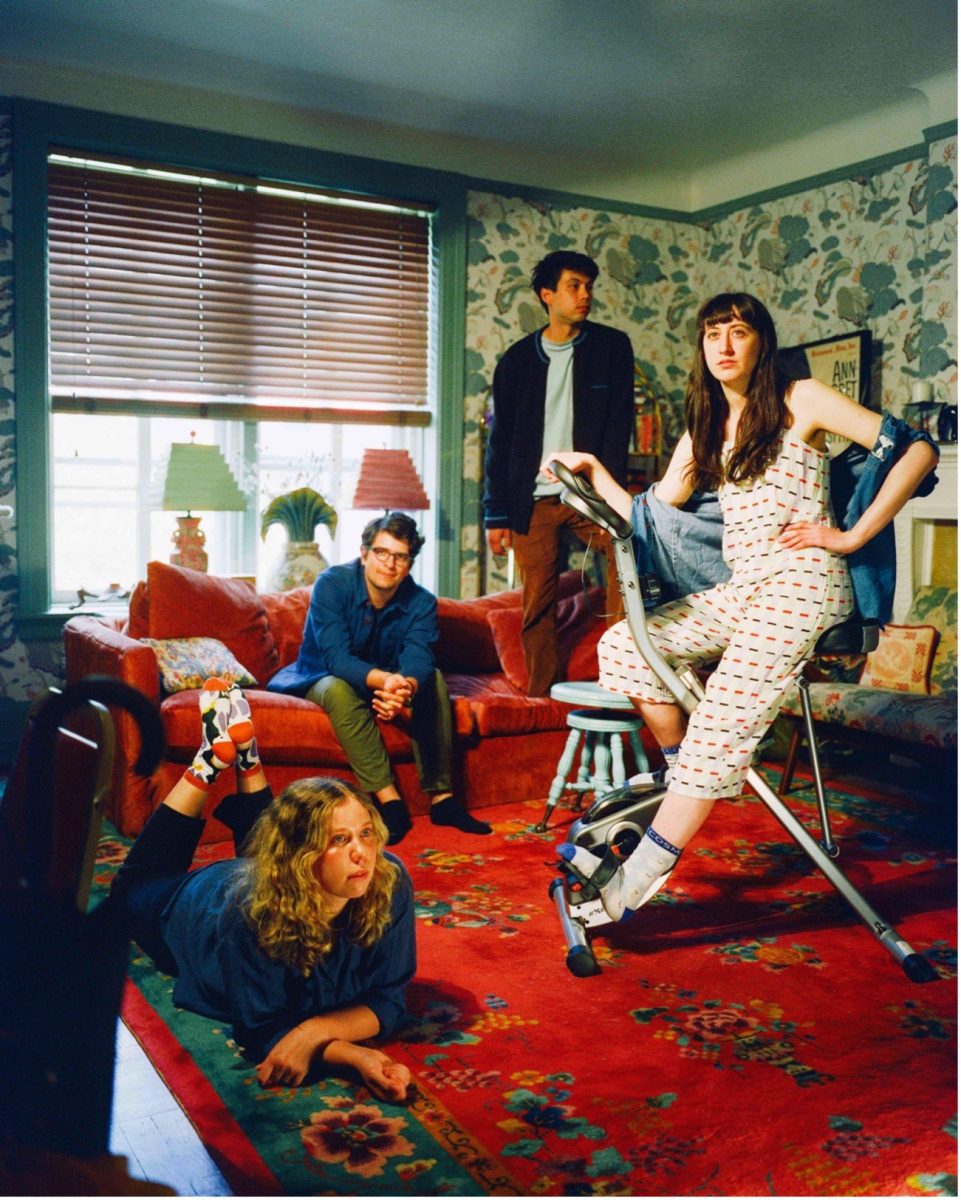
It’s not too extraneous to compare Beck’s energetic career with Warhol and his Factory—after all, Beck Hansen’s career has been weird, artsy and all over the place. “Mellow Gold,” released in 1994, was a collage of southern-tinged rock. The indie rock sound has always been Beck’s bedrock, but his debut would incorporate stoner rock, folk, country, and alternative (‘94 alt-hit “Loser”).
While that might paint an image of some redneck studio, the album is heavy with the collage-sampling of the late Beastie Boys while also incorporating the vision that would influence the likes of DJ Shadow and both techno and instrumental hip-hop artists to come.
His eccentric hippie-stoner personality was making everyone buy into the coked-up character of his single, and yet the artpop star ends 2017 with five Grammy’s (and 16 nominations) and several award-winning art exhibits. He was the creator of several songs for the PS4/Vita game Sound Shapes, leader of a 157-member orchestra in a 360 degrees video livestream reimagining of David Bowie’s “Sound and Vision,” and even collaborated with Bjork, Nate Ruess, M83 and Childish Gambino.
His albums each promote a bold new sound—pop, punk, alternative, rap, rock, and his latest Grammy for 2014’s mellow, neo-classical folk. He surprises once again with his 13th album as a man who refuses to let himself be defined.
The single “Wow” is just that: a bold new avenue released last year. The first two bars of slide-whistle flutes could be construed as something familiar to Beck, if it weren’t for chop editing leaving hints of a more techno influence. Beck’s mono-channeled “giddy up”’s walk with low, muddy club bass back into Hansen’s familiar rap delivery—a purposefully nonsensical stream of consciousness.
It’s Beck doing trap, which is a weird statement, but he’s never been one to purposefully avoid any style before. The first half of the hook’s minimalist choruses of “wow’s,” like starry-eyed children, are met with the second half’s brighter synths and Beck’s high pitched dipping and rising harmonies.
The third verse (space that was originally meant for Chance the Rapper, apparently), has Hansen kaleidoscope rapping, sometimes off beat. While his “Mellow Gold” voice and the rather blunt and abrupt embrace of a club sound could almost characterize the single as sarcastic, Hansen slips into his more pleasant, sweeter, “Morning Phase” voice with a lyrically-earnest bridge.
“Colors” shares the same personality of its lead single. Track names like “I’m So Free” and “Dear Life” appear to be pointing fingers and laughing at radio pop simplicity, but really it’s just wearing its intentions on its sleeve with all sincerity.
First track “Colors” feels like Beck’s imagining of the same club escapism that created Lorde’s “Green Light,” only hers is the anticipation of the taxi on the way there, and Beck’s is the assault of lights when the door finally opens. The song fades in on a dance floor in motion: familiarly polished drums of 90s dance hits, blown-out synths and a nice Beck pan flute touch.
The song is best experienced in the music video that accompanied its release, because of course Beck had to have some kind of multimedia experience. The video features smash cut pans of pairs of hands squishing, squeezing and playing with all kinds of neon colored, differently textured slime.
It’s done exceptionally well to create the same pleasurable experience of visual autonomous sensory meridian response, or ASMR, basically—it makes you tingle. And the sensation cleverly works with the driving beat and quick cuts to create an exhilarating experience.
“Seventh Heaven” follows and works to continue the dancing with the same kind of accentuated downbeats and lower timbre of a Taylor Swift song. Beck’s spur of the moment lyrical style is perfect for music that plays as the backdrop of a young adult spinning under the city lights.
“I’m So Free” builds big with electric guitars in a contrasting rock setting. What starts as a pop verse has Beck borrowing Twista’s chopper flow as he raps over guitar into a pop-meets-rock hook that almost works. Beck plays the two genres against each other instead of trying to find any common ground.
“Dear Life” trades any synths for a boisterous jazz piano. Hansen’s voice carries its same delivery, and it’s a testament to his production the way a song that sounds so different from the first few can somehow feel right in its place. Other pop musicians who try to curtail the whole “multi genre” album always end up with tracks naked and exposed with how unfamiliar they are. Pop has been taken many places as a genre, but always circles back to its familiar simplicity.
Beck taps into that simplicity in stride. While it’s sometimes too simplistic, sometimes too underdeveloped, “Colors” takes each cliche and trend and gives them a shake. The simple-minded, and simple-lyricked (“Up All Night”’s chorus of “I just want to stay up all night with you” or “Square One”’s “Cause this is life and it’s alright, taking detours in your mind”) songs should yield something more disastrous, but Beck shines in the wings of both verses and production.
The hooks are usually disgustingly simple, but Hansen lends to the verses the same prose that raised him from an eccentric to a respected artist. Aside from the Sgt. Pepper-inspired “Seventh Heaven,” there’s nothing outwardly artsy that demands attention from the overarching theme of simplicity here, but every song has moments of well written nuance.
Above all, it’s Beck’s talent as a multi-instrumental producer that brings the album together. It’s not just in its presence but also its restraint. Smart flourishes of glitch-hop sample jut energy into the bars just before a chorus, pianos and guitars are mixed in a way that cherish their sparse appearances, and instruments are brought in and out, given space and paced properly.
But “Colors” is also smart in its moments of maximalism. “Wow”’s transition to its third verse plays three competitive drum rolls on the upbeat just after several new elements have already been brought in. As Beck carries the intentionally shaky momentum into his off-key rapping, the bass gives way for trumpets blaring in the background.
Eight-hundred and eight claps and syncopated echoes dance through both channels, and the eight bars end with Beck’s modulated, down pitched voice accentuating the internal rhyme scheme of his last line—and all of this in contrast to songs incredibly minimalist trap sound.
“Colors” feels more like an exhibit from Beck than a proper album—him dipping the toes into a genre rather than fully immersing himself as he usually does. The adherence to the thematic both lyrically and sonically restrain the album from becoming something wholly original. Each song sounds like a Top 40 hit reimagined, filled with new artpop idiosyncrasies. While Beck’s genre releases have all felt like him playing tour guide, “Colors” is a bit too on the nose due to its lyrical self-handicapping as well. But it’s really hard to stay mad at an album grinning stupid, far removed from complexity, and crafted by an indie superstar. After all, it was made for a good time.
Matthew Joseph can be reached at [email protected].


















